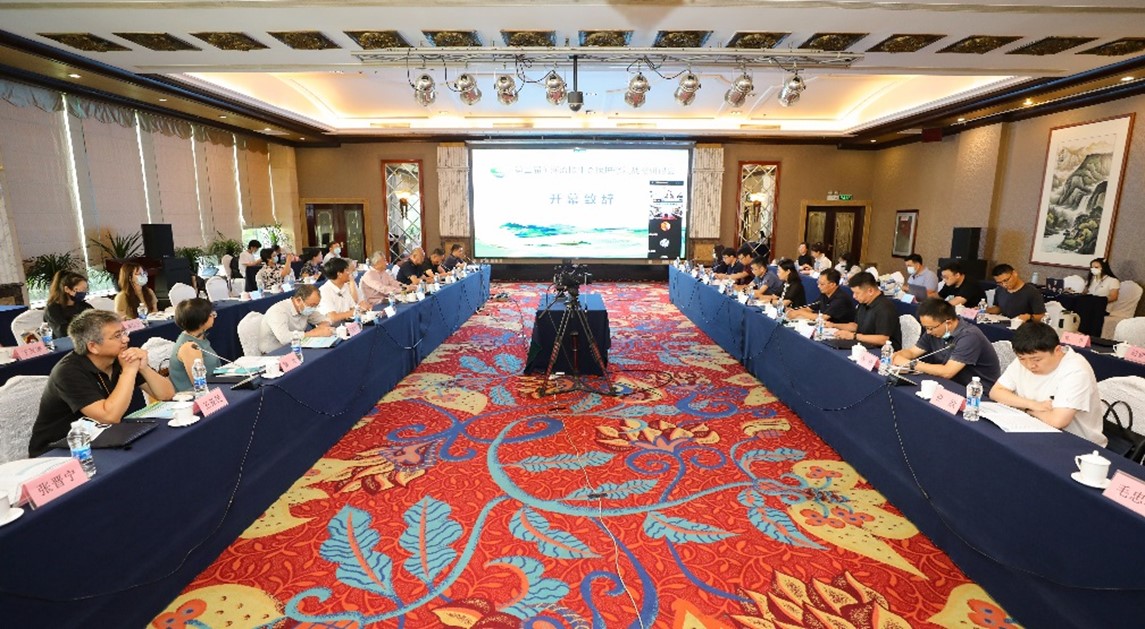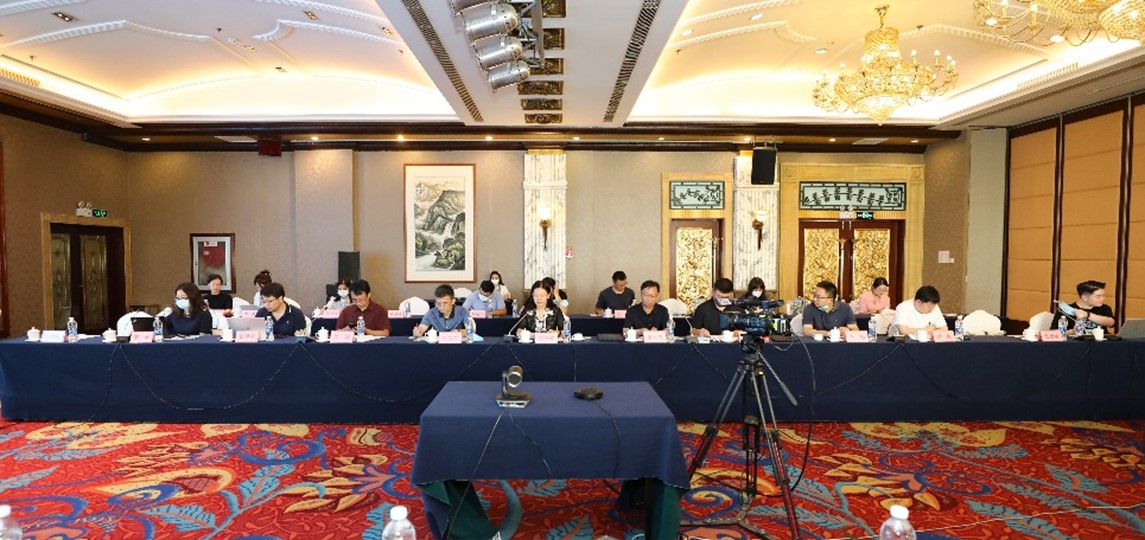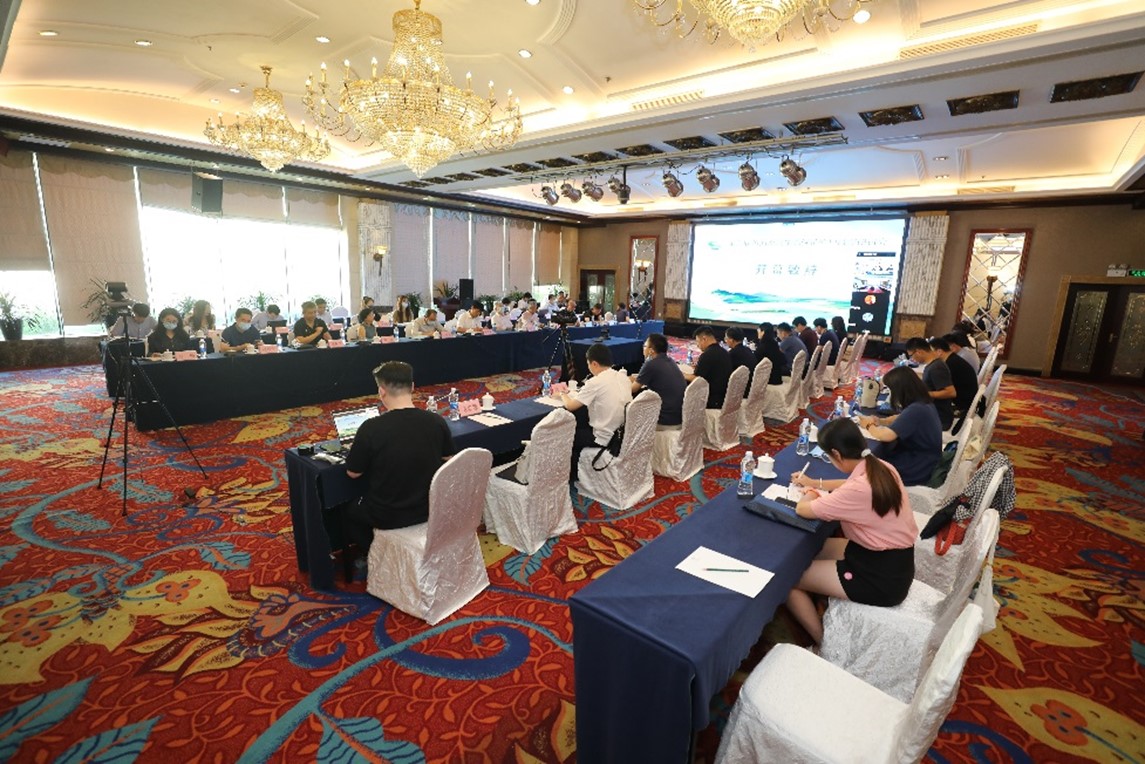On August 16, the second "Conference on Ecological Protection and Restoration Strategy of the Yellow River Basin" was held in Beijing. The meeting was hosted by the Yellow River Ecological Institute (YREI) of CAF, together with the Research Institute of Forestry Policy and Information and the Experimental Center of Desert Forestry. Zhang Shougong, Hu Chunhong, Yin Feihu, three academicians of the Chinese Academy of Engineering, and other relevant experts jointly discussed the important theoretical and practical issues facing the ecological protection and restoration of the Yellow River basin. Cui Lijuan, President of YREI and Vice-President of CAF, delivered a welcome speech.
Academician Hu Chunhong, Academician Yin Feihu, Professor Wang Zhongjing of Tsinghua University, and Professor Cao Banghua of Shandong Agricultural University were invited to give special presentations at the meeting. Academicians and experts focused on the four themes of "Mechanism and trend prediction of water and sediment change in the Yellow River basin", "Technical innovation and main problems of drip irrigation water fertilizer integration", "Digital twin of irrigation area - modern irrigation area with water network", "Technology and practice of improving forestry ecological function in the Yellow River Delta", and systematically answered the scientific and technological issues that need to be focused on in the ecological protection and restoration of the Yellow River basin, such as water and sediment control and prediction, water-saving irrigation and efficient use of water resources, forests and grasslands management and improvement of ecological functions, which enlightens new ideas for the next step of scientific research on Yellow River control. Academician Zhang Shougong presided over this session.
Experts from Lanzhou University, Inner Mongolia University, Beijing Normal University, and Gansu Desert Control Research Institute shared their research and practical experience in different ecological management and improvement of ecological quality of grasslands, wetlands, deserts, and other ecosystems in the Yellow River basin from the theoretical and technical aspects of ecological protection and restoration in the Yellow River basin. Whereafter, experts from Bayannur Forestry and Grassland Bureau of Inner Mongolia, Sanshenggong Water Control Project Management Center of the Yellow River in Inner Mongolia, CAF, and The Nature Conservancy conducted in-depth discussions on the policy practice model of relevant areas of the Yellow River basin in promoting ecological protection and high-quality process of the Yellow River basin.
At the conference, the YREI officially released the 2021 annual report "Land Use and Landscape Pattern Evolution of the Yellow River Basin". From the perspective of forestry and grassland, the report focuses on the whole basin and analyzes the changes in land use and landscape pattern in the Yellow River basin in the past 40 years from 1980 to 2020, based on data on remote sensing monitoring. It reveals the characteristics of land use and landscape pattern changes in the Yellow River basin from the basin level and further discusses the driving mechanism in different historical periods. It is important basic research to solve the problems of Yellow River basin governance. It is of great significance to build a new pattern of land use and ecosystem in the Yellow River basin.
In the new historical period, the Party Central Committee and the State Council have elevated the ecological protection and high-quality development of the Yellow River basin to a major national strategy. Under the guidance of the National Forestry and Grassland Administration, the ecological governance and high-quality development of the Yellow River basin have always been the prior and key research areas of CAF. So far, CAF has built 10 nation-level and bureau-level positioning observation research stations and 3 national long-term scientific research bases in the Yellow River basin. Also, fruitful research achievement has been obtained, such as the management and restoration of alpine wetlands and grasslands ecosystems of the upstream, the treatment of wind and sand into the Yellow River and the comprehensive management of planted forest water of the midstream, and the restoration of tidal flats and grasslands degradation and coastal wetland ecosystems of the downstream. It provides the scientific basis and technical support for ecological protection and control of the Yellow River basin.
After its establishment in 2020, YREI has implemented a series of work around the scientific and technological needs and policy research for ecological protection and high-quality development of the Yellow River basin. The "Countermeasures and Suggestions for Wetland Protection and Management under the Background of High-Quality Development in the Yellow River Basin", put forward by YERI, was approved by the national leaders. The suggestions on the bill proposed in the "Study on the Draft Legislation for the Yellow River" had been submitted to the Legislative Group of the Yellow River Law. It has undertaken a number of major research projects on ecological protection and restoration of the Yellow River basin from the Engineering Academy, the National Forestry and Grassland Administration, and the Chinese Academy of Forestry. Meanwhile, it has accumulated rich achievements and experience in the evolution of ecological quality of the Yellow River basin, ecological restoration strategies, carrying capacity of forests and grasslands ecosystems, grasslands and wetlands ecological conservation, integrated land desertification control, and other theoretical issues and key technologies, and has made positive progress in building a scientific and technological innovation platform for the coordinated development of ecological protection and restoration and green industries.
The meeting was held in a combination of offline and online. More than 150 representatives from over 70 institutions including the Gansu Provincial Development and Reform Commission, Tsinghua University, China Agricultural University, Beijing Forestry University, Chinese Academy of Sciences, Chinese Academy of Forestry, The Nature Conservancy and the World Bank attended the meeting. The conference received extensive attention from all walks of life and received a warm response. The number of live viewers over 128000.


